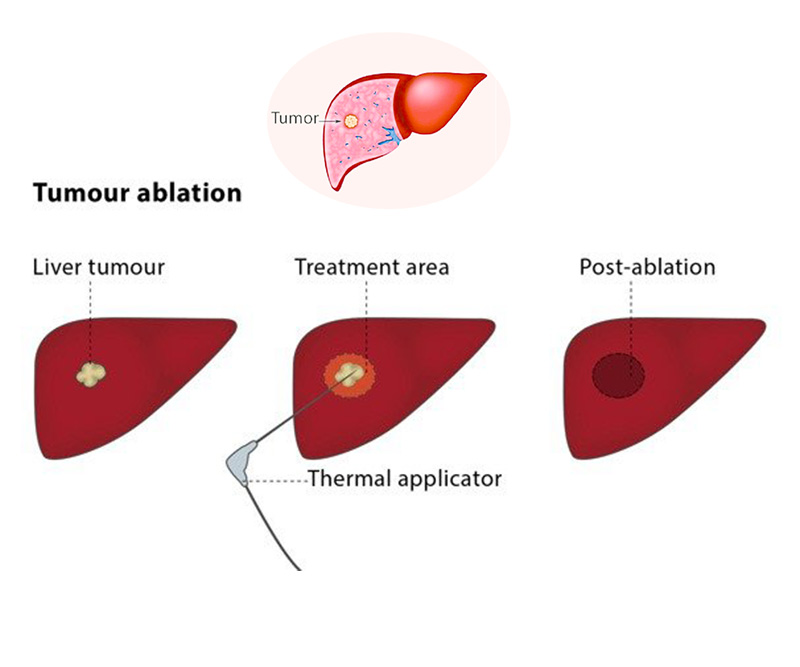Thermal ablation of Tumor
What is Thermal Ablation?
Thermal ablation is a minimally invasive, image-guided procedure that destroys tumors using heat, cold, or electrical energy. This technique is safe, effective, and improves survival in patients with solid organ tumors, including those in the liver, kidney, bone, lung, spine, prostate, thyroid, and breast.
It is particularly beneficial for patients with painful bone tumors, providing immediate pain relief, allowing them to continue chemotherapy or radiation therapy without interruption.
How is Tumor Ablation Performed?
At RJIR Vascular & Oncology, we perform image-guided, percutaneous tumor ablation without the need for open surgery.
- Accurate needle placement inside the tumor is essential for complete destruction.
- IV contrast may be used to enhance tumor visualization.
- Protective fluid injections may be administered to move nearby organs away from the treatment area.
Types of Tumor Ablation
- Microwave Ablation (MWA) – Uses electromagnetic energy to generate heat, treating larger tumors more effectively and reducing heat loss.
- Radiofrequency Ablation (RFA) – Uses electrical currents to heat and destroy tumors. Not suitable for patients with pacemakers.
- Cryoablation – Uses extreme cold to freeze and destroy cancer cells while inducing an immunologic "abscopal effect," potentially stimulating the immune system to attack metastatic tumors elsewhere.
- Pulsed Field Ablation (P-IRE, Irreversible Electroporation) – Uses high-voltage electrical pulses to create nanopores in tumor cell membranes, destroying cancer cells while preserving nearby nerves, vessels, and ducts, making it ideal for tumors near critical structures.
Commonly Treated Cancers
- Liver
- Kidney
- Lung
- Bone & Spine
- Prostate
- Thyroid & Breast
- Face & Neck Tumors
How Effective is Tumor Ablation?
- RFA is a proven first-line therapy for early Hepatocellular Carcinoma (HCC), improving overall survival by 68% with a 76% survival rate at three years.
- MWA offers faster treatment times, larger ablation zones, and better results for larger tumors.
- Cryoablation may stimulate an immune response (abscopal effect), enhancing systemic cancer control.
- P-IRE preserves critical structures, making it ideal for tumors near bile ducts, nerves, and major blood vessels.
- Patients undergoing bone tumor ablation experience immediate pain relief.
Considerations & Risks
- Tumor size affects success – Larger tumors have a higher risk of recurrence.
- Minimal risk to surrounding organs, but precautions such as fluid injections may be used for safety.


Schedule a Consultation Today to see if thermal ablation is right for you!
A Safe & Effective Cancer Treatment
Thermal ablation using MWA, RFA, Cryoablation, or P-IRE is a highly effective, minimally invasive option for local tumor control and pain relief.
